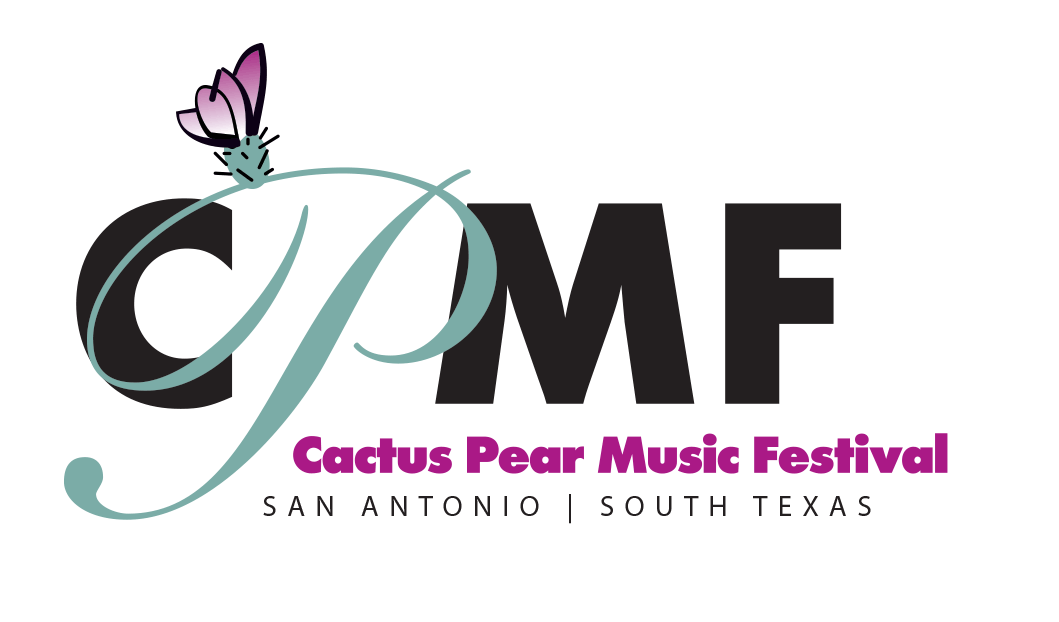2.
Out of the Blue
Friday July 12, 2024
| 7pm
Chapel in the Hills, Wimberley – (Free, limited seats, reserve seat(s) please!)
CONCERT SPONSORED BY DAVID & ELLEN BERMAN
Sunday July 14, 2024 | 3pm
University of the Incarnate Word, Diane Bennack Hall
David Baker (1931-2016) • Roots II for piano trio (1992)
Incantation •
Dance in Congo Square • Boogie Woogie
— Kim, Kostov, Cuellar
Paul Wiancko (b. 1983) • American Haiku for viola & cello
— Sorgi, Kostov
Aaron Copland (1900-1990) • Sextet for clarinet, piano
& string quartet (1937)
Allegro vivace •
Lento • Finale: precise and rhythmic
— Shterenberg, Sykes, Underhill, Kim, Sorgi, Kostov
Intermission
Francis Poulenc (1899-1963) • Rapsodie nègre for flute, clarinet, string quartet, piano, and baritone (1917)
Prélude •
Ronde • Honoloulou—Intermède Vocal • Pastorale • Final
— Jutt, Shterenberg, Underhill, Kim, Sorgi, Kostov, Sykes, Jones
George Gershwin (1898-1937) •
Rhapsody in Blue for
piano four-hands (1924)
— Sykes, Cuellar
Printable PDF of ALL program notes & song texts, click here.
A WIMBERLEY POST-CONCERT RECEPTION!
A small reception, sponsored by
Friends of CPMF, will take place
at the Chapel in the Hills after the Wimberley concert on Friday, July 12.
Our second program, OUT OF THE BLUE, celebrates classical music inspired by jazz and the blues. It’s named in honor of one of the most famous pieces ever written, Gershwin’s Rhapsody in Blue, which happens to be celebrating its 100th birthday this year!
— Jeffrey Sykes, DMA, Artistic Director
(all program notes by Jeffrey!)
David Baker (1931-2016)
Roots II
for piano trio (1992)
David Baker was a native of Indianapolis, Indiana, and founded the jazz program at the Indiana University School of Music in Bloomington. He was Distinguished Professor of Music and Chairman of the Jazz Department. A virtuosic composer and a performer on multiple instruments, Mr. Baker taught and performed throughout the USA, Canada, Europe, Scandinavia, Australia, New Zealand, and Japan. His blues-inflected piano trio Roots II was written in 1992 for the Beaux Arts Trio. We’re performing three movements of the work today.
Baker writes about Roots II:
“In 1978 I wrote a work entitled Roots which was commissioned by and dedicated to the Beaux Arts Trio. Two movements of Roots, "Incantation" and "Sorrow Song," appear in Roots II, a five-movement suite completed in 1992.
Each of the five movements—"Incantation," "Dance in Congo Square," "Sorrow Song," "Boogie Woogie," and "Jubilee"—is a stylized portrait of a musical form from the African-American tradition. [Note: we are performing “Incantation,” “Dance in Congo Square,” and “Boogie Woogie” today.] This tradition, which includes work songs, field hollers, blues, ragtime, boogie woogie, rhythm & blues, spirituals, gospel songs, calypso, rock & roll, rap, and of course jazz, provided the rich resources on which I drew. In composing this work, I made use of some of the musical features common to these varied styles, among them, rhythmic pre-eminence, the spirit and attitude of the blues, call and response, and ostinato.
I. Incantation
"Incantation" is an attempt to capture the musical mood of the voodoo rites which had their origins in ancient African traditions. An insistent and persistent drone or vamp is the basis for this movement.
II. Dance in Congo Square
"Dance in Congo Square" is an allusion to the area in nineteenth-century New Orleans where blacks periodically congregated to perform a wide variety of music, dances, and religious rituals that might have been explicitly forbidden in a less liberal environment. This movement is an attempt to capture the spirit and vitality of the music of the West Indies.
IV. Boogie Woogie
"Boogie Woogie" is a stylized version of a popular black piano music which flourished from roughly 1938 to 1945. Also known as "fast Western," "juke," and "rent party music," this style was based on the blues form and a left-hand ostinato. Boogie woogie was the basis of the rhythm & blues and rock & roll of the 1940's and 1950's. As in the original, the piano is the focus of this movement.”
Paul Wianko (b. 1983)
American Haiku for viola and cello (2014)
Paul Wiancko is virtuoso composer and the recently-appointed cellist of the legendary Kronos Quartet. He also serves as the director of chamber music for the Spoleto Festival USA. Of Japanese-American heritage, he has always had a strong interest in both traditional Japanese folk music and American folk music, especially Appalachian music.
American Haiku for viola and cello is his brilliant attempt to reconcile these disparate traditions. Written in 2014, he describes the work as a “fusion of the broad earthiness that is Appalachian music, with the tender, sparse rhythms of Japanese folk song.” Like traditional Japanese Haiku, American Haiku is in three sections, exploring the depths of meaning within a very brief structure.
Aaron Copland (1900-1990)
Sextet for clarinet, piano, and string quartet (1937)
When we think of a distinctly “American” sound in classical music, we tend to think first of the music of Aaron Copland (1900-1990). Copland developed an accessible style of writing that he himself described as “vernacular.” That style is very apparent in the series of works he wrote in the 1930s and 1940s—works such as the Sextet for clarinet, piano, and string quartet (1937), Appalachian Spring, Billy the Kid, Rodeo, and his Fanfare for the Common Man—and they cemented his reputation as the “Dean of American Composers.”
Ironically, this quintessentially American composer grew up in Brooklyn, the son of Jewish Russian immigrants. In an endearingly American fashion, he first tried to learn harmony through a correspondence course, but at age 17 he started taking composition and harmony lessons with Rubin Goldmark—one of Dvorák’s students from the National Conservatory of Music of America. Copland studied with Goldmark for four years. It seemed clear, however, that he needed to attend “finishing school” in Europe. In the nineteenth and early twentieth centuries that meant Germany, but right after World War I it meant Paris. Goldmark encouraged Copland to study at the American College at Fontainebleau, where he met the master teacher Nadia Boulanger. Boulanger gave Copland the technique he needed to find and master his own voice.
Aaron Copland's Sextet, composed in 1937, is a brilliant example of his early foray into this distinctly American sound. The piece originated as his challenging and avant-garde "Short Symphony" (Symphony No. 2), written in 1933. Due to its complexity and difficulty, the symphony faced performance obstacles, leading Copland to rework it into a chamber ensemble format. This transformation not only made the piece more accessible but also allowed Copland to refine and focus its intricate textures and rhythmic vitality. Today, while still challenging, the Sextet is considered one of the composer’s finest pieces. Taking the long view of history, the composer said, “One learns to have patience.”
The Sextet is divided into three movements played continuously, each showcasing Copland's ability to blend rigorous structure with a uniquely American lyrical and rhythmic idiom. The first movement is characterized by its energetic and syncopated rhythms, interspersed with lyrical passages. This movement sets the tone with its lively interplay between the clarinet, piano, and strings, reflecting the influence of jazz and folk elements that Copland was beginning to incorporate into his music. The second movement provides a stark contrast with its slow and introspective nature. Here, Copland employs a more lyrical and expansive melodic line, allowing the instruments to converse in a more contemplative and expressive manner. The movement’s serene and meditative quality is punctuated by moments of tension and release. The final movement returns to the energetic and rhythmic vitality of the opening. It features complex, interlocking rhythms and a sense of forward momentum that drives the piece to a compelling conclusion.
Francis Poulenc (1899-1963)
Rapsodie nègre for flute, clarinet, string quartet, piano, and baritone (1917)
Francis Poulenc, like Mozart, made a living as a freelance musician. He grew up in a wealthy bourgeois family that gave him every advantage one could desire. Poulenc showed an early aptitude for music, but his father—no doubt thinking ahead to the difficult life of a freelance musician—insisted that he complete a standard classical education before enrolling in the conservatory. Poulenc happily agreed to this plan, looking forward to the time when he could devote himself fully to music, but ran into a few small problems along the way. With the outbreak of World War I in 1914, the death of his mother in 1915, and the death of his father in 1917, all bets were off. Luckily, he had begun studying privately with the great Spanish pianist Ricardo Viñes when he was 15. Viñes was a mentor to Poulenc during this difficult time, introducing him to other musicians, including Auric, de Falla, and Satie, and encouraging the young pianist/composer to follow music as a career.
Poulenc's Rapsodie nègre (“Black rhapsody”), composed in 1917, is a five-movement suite for baritone, flute, clarinet, string quartet, and piano that reveals the influence of the exoticism and primitivism that were popular in the early 20th century. Dedicated to Erik Satie, the composition is based on a pseudo-African text, which was part of the then-current avant-garde fascination with non-Western cultures. (Recall that this was the time of Picasso’s obsession with African art and the time of Milhaud’s jazz ballet La création du monde based on African creation myths. Poulenc himself wrote that the work was “a reflection of the taste for African art that had flourished since 1912 under the impetus of Apollinaire.”) Poulenc had run across some published verses, Les Poésies de Makoko Kangourou, “edited” by Marcel Prouille and Charles Moulié (in reality, written by Marcel Ormoy); the verses were purportedly Liberian, but were a hoax, full of nonsense and Parisian boulevard slang. Poulenc created music perfectly suited to these bizarre words. Despite the youthful exuberance and the playful, sometimes satirical nature of the piece, it already showcases Poulenc’s distinctive melodic flair and his penchant for blending diverse musical styles.
Poulenc himself wrote of the work, “The Rapsodie nègre was written when I was eighteen. It was my first work; I mean the first I allowed to be heard; it was in fact the first time I had created something that I liked a little. I hated everything I was doing. The Rapsodie nègre is not an exotic or picturesque work: it is simply a work of free melody.” Heavily influenced by jazz and ragtime, the work also has a primitive quality to it, with moments that are almost nonsensical. Paul Vidal, an eminent teacher at the Conservatoire, had exclaimed on seeing the score, “Your work is foul, inept, unspeakable rubbish. You are laughing at me, with your fifths everywhere: and what is this “Honolulu”? A dirty joke? Ah! I see that you are going along with the Stravinsky, Satie and co. gang. Well, good night.”
The work was premiered on December 11, 1917, and was a huge success. Poulenc wrote of that premiere:
“At the last minute the singer threw in the towel, saying it was too stupid and that he didn't want to be taken for a fool. Quite unexpectedly, masked by a big music stand, I had to sing that interlude myself. Since I was already in uniform [Poulenc served in the French army towards the end of the First World War], you can imagine the unusual effect produced by a soldier bawling out songs in pseudo-Malagasy!”
CLICK HERE FOR THE FULL TEXT OF RAPSODIE NEGRE
George Gershwin (1898-1937)
Rhapsody in Blue for piano four-hands (1924)
George Gershwin's Rhapsody in Blue is celebrating its 100th anniversary this year. Premiered in 1924, it is one of the most iconic works of American music, symbolizing the fusion of classical and jazz traditions. Commissioned by bandleader Paul Whiteman for a concert intended to demonstrate the evolution of American music, this piece captures the spirit of the Jazz Age with its vibrant energy and distinctive melodies.
Gershwin, then a rising star in the world of Broadway and popular music, composed Rhapsody in Blue completely “Out of the Blue,” finishing it in just a few weeks. In the fall of 1923, Paul Whiteman asked Gershwin to write a concerto in honor of Lincoln’s birthday in February. Gershwin demurred, saying he didn’t have time, and thought nothing more of it. When Gershwin looked at the New York Herald-Tribune on January 4, 2024, he was quite surprised to find an announcement that claimed he had begun work on a jazz concerto for Whiteman’s concert!
He began composing the work on January 7. He wrote that ideas for the work came to him on the train from New York to Boston:
“It was on the train, with its steely rhythms, its rattle-ty bang, that is so often so stimulating to a composer.... I frequently hear music in the very heart of the noise. And there I suddenly heard—and even saw on paper—the complete construction of the rhapsody, from beginning to end. No new themes came to me, but I worked on the thematic material already in my mind and tried to conceive the composition as a whole. I heard it as a sort of musical kaleidoscope of America, of our vast melting pot, of our unduplicated national pep, of our metropolitan madness. By the time I reached Boston I had a definite plot of the piece, as distinguished from its actual substance.”
The work was premiered to tumultuous applause on February 12, 1924.




